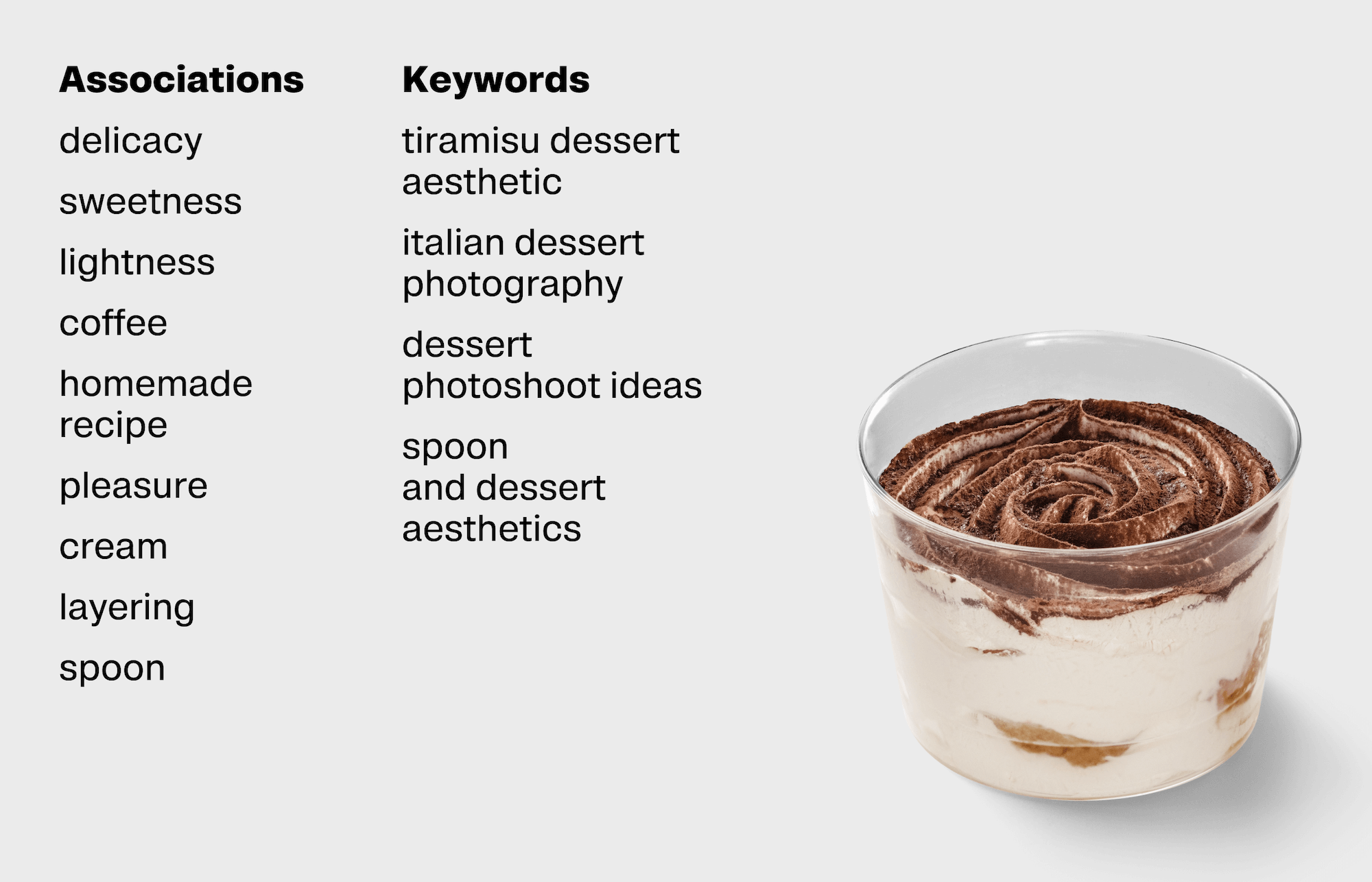Looking for references
The development of a master layout starts with the selection of references. The key task at this stage is to find inspiration, collect ideas and figure out which ones are worth developing.
The whole process includes 5 steps:
- Making a list of keywords which will be used in the search for references.
- Collecting eye-catching images.
- Grouping the pictures by theme.
- Filtering the ideas.
- Looking for references for minor details.
You will find a selection of web sites to search for references in the guide "Fishing spots with references".
Make a list of keywords
For starters, we put down all the associations that the product brings to mind. And then, based on this, we formulate a list of keywords, which we will use in our search. We combine keywords and the name of the product, trying out different combinations in the search bar.
For example, "Tiramisu" brings out associations with rich coffee aroma, layers of delicate sponge cake and mascarpone. We imagine that it must be eaten with a spoon to make all the flavours of ingredients work together.

Gather ideas
This is the freest stage on the project. We switch off our inner critic and save all the pictures that catch the eye and elicit associations with the product, even if the link is not quite obvious.
This approach stimulates the creative process and helps to look at the task a little broader, and not to miss interesting ideas. We will filter them at the further stages.
Choose 2-3 directions
We group the selected items into several sets, according to their themes. These themes are topic directions that are radically different from one another. Not just different colours or angles, but different meanings, situations, and approaches to portraying the product.
We look into each group: we determine what exactly attracted us in the selected images and then we try to find something similar. So, based on 1-2 references, we find ten other interesting interpretations of the idea.
Filter the ideas
Evaluate the images you found critically at this stage. First of all, we determine whether the chosen references help to solve the problem. To identify the pros and cons of each solution, we cover the following questions:
- if this reference helps to reveal the idea,
- what associations this visual evokes,
- whether what we want to say is clear enough,
- how difficult it is to realise,
- what recources it would take.
Look for references for minor details
Keep some time to select references for those details of the layout that help to reveal the idea: photos, typography, composition, colour combinations, graphic elements. During the search process, put more focus onto posters and identity.


The next stage after collecting references is sketching. We prepare a sketch of the layout from the references and photos taken at test shoot (preshoot), and then approve the final direction with the owner and proceed to the development of the master layout.
Read next:
